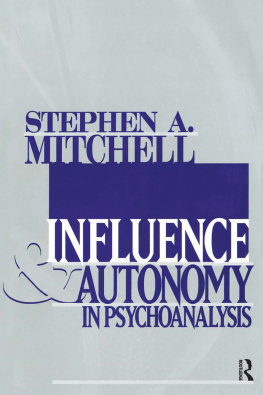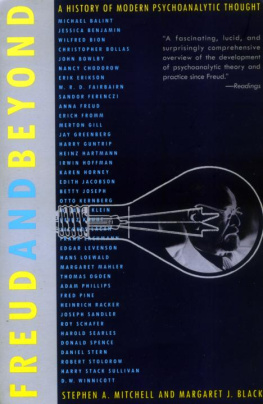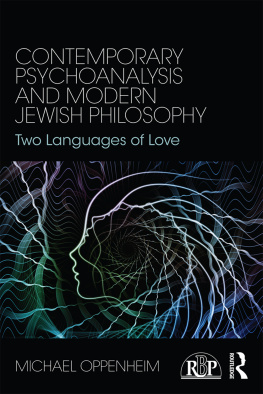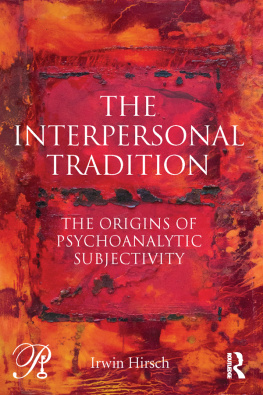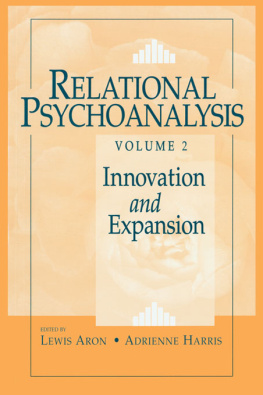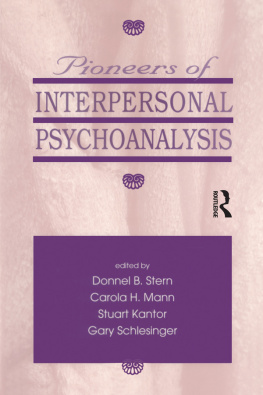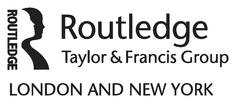INFLUENCE AND AUTONOMY IN PSYCHOANALYSIS
Stephen A. Mitchell
First published 1997
by Routledge
Published 2013
by Routledge
2 Park Square, Milton Park, Abingdon, Oxon OX14 4RN
711 Third Avenue, New York, NY 10017, USA
Routledge is an imprint of the Taylor & Francis Group, an informa business
1997 by Taylor & Francis
Reprinted 2009 by Routledge
All rights reserved. No part of this book may be reproduced in any form: by photostat, microform, electronic retrieval system, or any other means, without the prior written permission of the publisher.
ISBN: 978-1-315-80332-6 (eISBN)
LIBRARY OF CONGRESS CATALOGING-IN-PUBLICATION DATA
Mitchell, S. A. 1946-2000
Influence and autonomy in psychoanalysis / Stephen A. Mitchell
p. c.m
Includes bibliographical references and index.
ISBN 0-88163-449-2
1. Psychotherapist and patient. 2. PsychoanalysisMethodology.
I. Title
RC480.8.M58 1997
616.89'17dc21 97-40014
10 9 8 7 6 5 4
"It seems to be the fear of moulding the patient in one's own image that has prevented analysts from coming to grips with the dimension of the future in analytic theory and practice, a strange omission considering the fact that growth and development are at the center of all psychoanalytic concern."
Hans Loewald, 1960, p. 230
"We can exert no influence on what most resembles our own experience; in what bears our own imprint we are unable to recognize ourselves."
Italo Calvino, 1983
"The road to interiority passes through the other."
Williams, 1992, p. 151
CONTENTS
PROLOGUE
Interaction and the Problem of Technique
The concept of technique in psychoanalysis is generally associated with the three fundamental pillars of classical American orthodoxy: neutrality, anonymity, and abstinence. Although they have been put into practice in a wide variety of ways, these principles are generally understood as injunctions against the analyst's ill advised participation in the analytic process. They caution restraint: remain calm and nonpartisan; stay hidden; do not gratify.
With the broad movement in the direction of a two-person, interactive view of the analytic process, these principles have fallen into disrepute. Even in the most conservative quarters, they are being radically transformed. Most of us now seem to regard the analyst as inevitably and usefully embedded in the process. Because there is nowhere to hide, gratification and the analyst's partisanship, in one form or another, are inescapable. With the fading of the classical model, the very concept of technique itself has also fallen into disrepute. The emphasis now is on interaction, enactment, spontaneity, mutuality, and authenticity; technique is associated with what is regarded as the anachronistic illusion that the analyst can remain outside the process by maintaining a wooden, mechanical demeanor. In the current analytic milieu, the term technique itself has become almost a term of abuse. Technicians are people who clean teeth, run electrocardiogram machines, and fix computer hardware. Technique in psychoanalysis is associated with precisely the impersonal, scientistic model of psychoanalytic practice many of us were trained in, found inadequate, and left behind.
But the great value of classical technique was that it helped the clinician make choices. Perhaps the most frequently asked question by beginning clinicians these days is, "How do I know what to do?" Most experienced analysts who identify themselves in one fashion or another as relational have a hard time responding with any degree of specificity to this question. When the analyst was envisioned as outside the process, it was easy to develop consistent and generally applicable guidelines for her participation. Proper technique insured replicability of good work. Now that the analyst is envisioned as embedded, to one degree or another, in the process, general guidelines are difficult to imagine. Because each analytic dyad and each situation is, in some sense, a unique configuration, we don't want to prescribe or proscribe the analyst's responses.
In the traditional approach to technique, there were clear injunctions: "Maintain the analytic frame." "Never ask questions." "Never answer questions." But these kinds of rales don't work well anymore. We assume that the analysand often sees through the analyst's posturing, and we want the analytic clinician to behave in ways that are personally authentic for him or her. Many of us now believe that what one does is less important than how openly what does happen is processed with the analysand. That is all well and good, but, still, we do have to decide what to do.
The analytic clinician necessarily makes clinical judgments all the time. She is constantly struggling with questions like: What sort of frame should be maintained? Should I express my countertransferential experiences? Should I answer the analyeand's inquiries? In response to such questions, most contemporary relational analysts would probably answer, "It depends." The recent analytic literature is full of inspirational examples of great success when the analyst did one thing or another, usually something contrary to the automatic application of classical injunctions, but there is little focus on what the analyst's response depends on.
Throughout this book I demonstrate that current psychoanalytic concepts like interaction (or dyadic or two-person perspectives) have a long history, have been developed broadly and differently in different theoretical traditions, and are applied quite variously by contemporary analytic writers and clinicians. We will see that viewing the analytic process in interactive terms does not translate directly into a particular course of action, a particular analytic stance, a particular set of directions to the clinician about what to do.
Because classical principles of technique were so closely tied to restraints on the analyst's potential emotional and behavioral overinvolvement with the patient, the fading of these principles has been accompanied by fears that now "anything goes." Of course, there are no authors declaring that anything should go, but the fear is that the abandonment of technical principles like neutrality, anonymity, and abstinence will lead us down a steep and slippery slope to irresponsible, reckless abandon.
In fact, as I demonstrate in this book, psychoanalysis is practiced today with just as much discipline and responsibility as in the days when classical theory of technique served as a framework. But discipline, or technique, in contemporary psychoanalytic work operates in a different way. The emphasis is not on behaviors but on rigorous thinking, not on constraints but on self-reflective emotional involvement, not on the application of general truths but on imaginative participation. This suggests a very different sort of "technique." The discipline is not in the procedures, but in the sensibility through which the analyst participates.
Technique in contemporary psychoanalytic practice, with its wide array of participatory options, operates in a fashion similar to technique in sports like tennis, or in arts like painting or music making, where technique is not a bad word. There is a sense that one cannot practice a complex craft without absorbing and mastering technical principles and component skills. Eventually, the technique dissolves into an individual style or statement. Artists or athletes who are merely good technicians are uninspired and limited in their potential. But great artists and athletes could never get where they are going without mastering technique.

